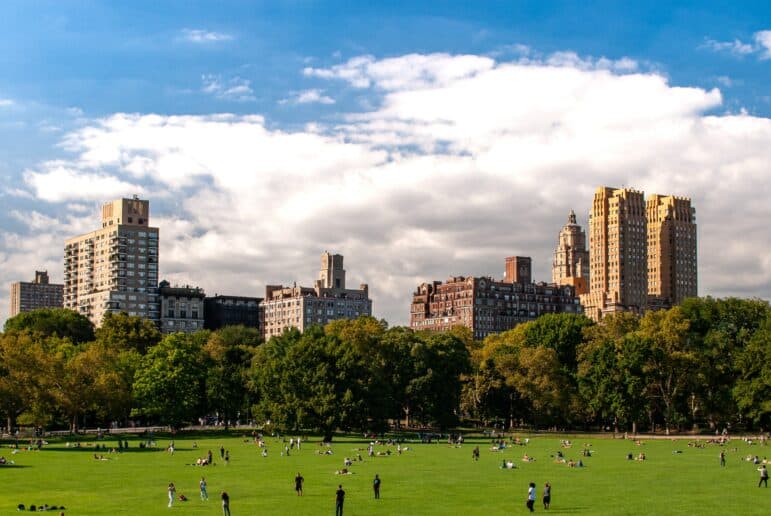Background
A legal battle waged by the Partnership for Civil Justice Fund resulted in a settlement in which New York City was required to establish a constitutionally valid permitting scheme for protests in Central Park. It was also required to undertake a feasibility study into the optimum and sustainable use of the Great Lawn and what efforts could be undertaken to maximize the availability of the lawn for large events including First Amendment protected rallies and demonstrations.
The litigation was originally brought in advance of the 2004 Republican National Convention (RNC) on behalf of the National Council of Arab Americans (NCA) and the A.N.S.W.E.R. Coalition (Act Now to Stop War & End Racism), who sought to hold a demonstration in support of civil rights and civil liberties including the targeted Arab and Muslim community during the George W. Bush Administration. The demonstration was timed to coincide with the opening of the RNC and was to be held on August 28, the 41st anniversary of Dr. King’s historic March on Washington, but was blocked by the city. Other organizations had also been denied permits to stage protest rallies in the Great Lawn during this period.
After the Republican National Convention concluded, the NCA and the ANSWER Coalition determined that they would continue the litigation in order to block the effort of Mayor Bloomberg and wealthy and corporate backers to privatize Central Park, including the Great Lawn, and make it off limits to mass political assembly, while at the same time allowing corporate-sponsored, politically approved events.
This three-year long litigation included depositions of top city officials as well as discovery of more than 10,000 pages of critical documents by city officials regarding efforts to prohibit critical free speech on the Great Lawn. These documents proved the falsity of the City’s representations as to the basis of the denials for protest permits in 2004. They also revealed that Mayor Bloomberg and his office were directly involved in political decision-making as to who should have access to the Great Lawn.
While New York barred the use of the Great Lawn for political protests against policies of the Bush Administration, the Great Lawn had been the site of many large gatherings in prior years including an American Online-sponsored rock concert by the Dave Mathews Band that promoted an AOL product, the Metropolitan Opera, the Philharmonic Orchestra, and other international celebrations and mass gatherings. The City denied the permits to the NCA and A.N.S.W.E.R. on the basis that the presence in Central Park of those intending to gather for civil rights would “damage the grass.”
Legal Information
National Council of Arab Americans and the A.N.S.W.E.R. Coalition v. The City of New York City, et.al., United States District Court for the Southern District of New York | Case No. 04-CV-6602
PCJF News
Central Park Great Lawn Lawsuit Results in Important Victory for Free Speech Rights
Press Coverage
The New York Times Editorial – A Step Toward a Free Great Lawn
The Associated Press – Groups say Central Park’s lawn may be opened to big rallies
Central Park’s Great Lawn might again be used for large public demonstrations rather than solely for events staged with help from the wealthy or corporations, lawyers for two civil rights groups said after a settlement with the city was announced Tuesday.
The New York Times – Settlement on Use of Central Park’s Great Lawn
The New York Times Editorial – A Perfect Lawn, Mowed and Muted
A court battle over the right to demonstrate on Central Park’s Great Lawn has underscored an astounding fact. In the heart of the nation’s largest and arguably most opinionated city, there is no place to hold a large rally.

